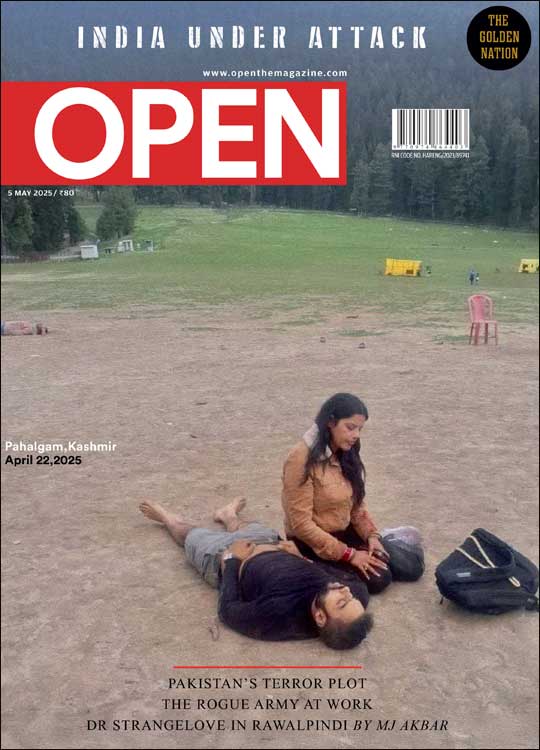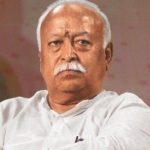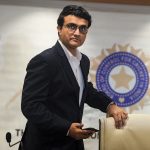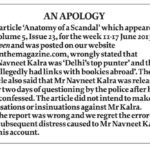The Backward is the new Brahmin
Portrait of a power class on the rise
 PR Ramesh and Ullekh NP
PR Ramesh and Ullekh NP
 PR Ramesh and Ullekh NP
|
03 Jul, 2014
PR Ramesh and Ullekh NP
|
03 Jul, 2014
/wp-content/uploads/2015/11/Cover-story1a.jpg)
Portrait of a power class on the rise
Mahatma Gandhi has often been blamed for laying the foundation for the Congress party’s dynasty politics. Why he chose Pandit Jawaharlal Nehru over Sardar Vallabhbhai Patel to lead India still provokes passions. Perhaps he feared incurring the wrath of Brahmins. Back then, Brahmin members in the top echelons of the party often held parallel meetings to push their agenda. Faizal Devji, an Oxford don who has written extensively on Gandhi, notes that the Father of the Nation “was a good Bania, and ended up choosing a Brahmin (Nehru) over another [relatively] ‘backward’ caste (Patel) as successor. He played the classic Bania role of mediator and connector”. The Brahmin wrath that Gandhi perhaps feared has been tempered over the decades; from 25 per cent of MPs in 1952, Brahmins make up less than 10 per cent of Parliament now. The decline in the proportion of Brahmins in the Lok Sabha has been especially sharp since 1984, when it was 19.9 per cent; the figure fell to 12.44 per cent in 1998 and 11.3 per cent in 1999.
Now, with Narendra Modi, an OBC, as Prime Minister, ‘backward caste’ influence is expected to rise. In a striking contrast to casteist parties such as the Mulayam Singh Yadav-led Samajwadi Party (SP) and Lalu Prasad-led Rashtriya Janata Dal (RJD), Modi’s social identity doesn’t translate into caste politics, but endears the BJP to Hindu OBCs who account for more than 40 per cent of India’s population. Till recently, they had disliked the domination of Brahmins, Rajputs and other ‘upper’ castes in the BJP. In the heartland states of Uttar Pradesh and Bihar, OBCs, who hold the key to government formation, had been backing regional outfits since the late 1980s, an era that saw the rise of the Janata Dal and later various other non-Congress, non-BJP parties as breakaway entities.
A senior Brahmin BJP leader from Uttar Pradesh argues that Modi’s rise doesn’t alienate ‘upper’ castes because of his “pro-market stance and merit-focused and development-oriented approach”. “Yes, his social identity helps allay fears of OBCs, who are the largest component of Indian society and who have so far aligned with divisive parties. This is good for the BJP in consolidating all the Hindus of this country. Modi, mind you, is not biased towards OBCs, but his rise has helped get the OBCs—who were suspicious of the party thanks to propaganda—on board,” he claims.
Devji agrees with the view that Modi is not a polariser along caste lines: “I wouldn’t put the Prime Minister in that category [of OBC leaders championing the case of their castes alone] politically, as his own background seems not to have been translated into caste politics, despite the number of OBCs in his party.”
A BJP leader from Madhya Pradesh, who belongs to the OBC Yadav community, feels that the BJP leadership has over the years accommodated “more and more” OBCs “as candidates to assemblies and the Lok Sabha” to win over the largest chunk of Hindu voters who stood divided. “Due to the clash in timing of the emergence of OBC leaders like Mulayam and Lalu and the BJP, these OBC leaders became natural allies of Muslims because their OBC politics was in direct contradiction with Hindutva politics— after all, the polarisation of OBCs along Hindu lines could have eroded their political bases,” notes this leader. He concedes that the domination of Brahmins and Rajputs in the party has been the main reason for “the limited growth of the BJP because OBCs never trusted the leadership of the BJP and felt more comfortable with regional parties emerging from the Janata Dal. This is where Modi, who never shied away from talking about his social identity, comes in and brings the whole lot of Hindus under one umbrella.”
For his part, Modi had consistently brandished his caste credentials in the run-up to the recent Lok Sabha election, which saw caste as well as class become political weapons of choice for the BJP’s prime ministerial candidate. He even alleged that rival Rahul Gandhi had shied away from being named the Congress prime ministerial candidate because the Nehru-Gandhi scion could not stand the ‘humiliation’ of losing to a person from a ‘lower strata’ of society. “The Congress feels it is not good to fight a tea vendor from a lower caste whose mother was a maidservant,” Modi had said. The BJP heavyweight had also turned Congress leader Mani Shankar Aiyar’s preposterous remarks against him to his advantage; Aiyar had said that Modi could never become Prime Minister, but he could sell tea at Congress meeting venues.
Ahead of the polls of 2014, the BJP, whose best Lok Sabha tally until this year in UP had been 57 seats in 1998, allotted more tickets in the state to ‘backward caste’ candidates as part of an effort to woo voters who feel they didn’t benefit much from the social engineering exercise that swept the state after the emergence of parties such as the SP and BSP. This meant that non-Yadav voters among OBCs and non-Jatavs or Mahadalits among Dalits got tickets to contest. OBC Lodh Rajputs had also thrown in their lot with the BJP, thanks to Kalyan Singh, a Lodh Rajput who had returned to the party. Petroleum Minister Dharmendra Pradhan, himself an OBC, has noted that the strategy paid off in both UP, where Amit Shah was the party in-charge, and Bihar, where he had presided over the choice of candidates and alliances. The BJP and allies went on to win 73 of 80 Lok Sabha seats in Uttar Pradesh and 31 of 40 seats in Bihar. The landslide for the BJP also saw the dramatic crystallisation of a pan- Hindu vote bank under one umbrella for the first time. The various caste groupings that got splintered and became captive vote banks for purveyors of identity politics became the vanguard of Modi’s victory. The BJP encroached the social turfs of Mayawati and Mulayam and shrank the Congress to two Lok Sabha constituencies in UP.
FIRST AMONG EQUALS
Since 1952, when the first Lok Sabha polls were held, Brahmin prime ministers have ruled India for a combined span of 51 years. With the exception of Prime Minister Manmohan Singh, who was at the helm for 10 years, no non-Brahmin Prime Minister has completed his term in office. Interestingly, Lal Bahadur Shastri (Kayasth), Charan Singh (Jat), VP Singh (Rajput), Chandra Shekhar (Rajput), Deve Gowda (Vokkaliga) and IK Gujral (Khatri) taken together were in power for only four years.
Thunders Laxmikant Bajpai, the BJP’s Uttar Pradesh state president: “In fact, Manmohan Singh, the political oddball, was a Prime Minister selected and not elected. He was catapulted into that position by Sonia Gandhi, who was married to a Brahmin and represented everything Brahminical and autocratic about the Nehru- Gandhi family.” He concedes that with Modi in power, ‘upper’ castes have “reconciled to the fact that it is the time of the OBCs because they are a majority and deserve to hold the reins of power”.
The ‘reconciliation’ that Bajpai talks about isn’t new to politicians of states such as UP and Bihar where ‘backwards’ have been in power since the era of Congress leader Narayan Dutt Tiwari and Jagannath Mishra ended in Lucknow and Patna, respectively. “Now this ‘social acquiescence’ is extending to the Centre as well with Modi emerging as the undoubted leader of the BJP,” says a Bhopal-based senior BJP leader from a ‘backward’ class community. Bajpai agrees with this view, but puts it differently, “The reservations that ‘backwards’ had about the BJP are dying fast and they are joining the BJP fold and voting en bloc for us,” he laughs.
Rajesh Ramachandran of Frankfurt-based Goethe University has closely studied India’s caste dynamics and its political impact. He explains the key triggers for the rapid empowerment of the OBCs in Indian politics over the past few decades: “First was the unfolding of events after the Mandal Commission report and the decision of the VP Singh government [to implement its recommendation by awarding 27 per cent reservation to OBCs in jobs]. The strong opposition to the announcement that the recommendations of the report were to be implemented resulted in creating an OBC consciousness. A group that was very heterogeneous—from powerful landed castes to poor labourers—suddenly developed salience as a category in response to the hostility shown by ‘upper’ caste members in the face of the potential extension of affirmative action to these groups.” He adds, “You could also imagine this strong bonding arising as a kind of ‘loss aversion’ effect—being promised something and then having it taken away (reservation here) results in much stronger aversion and hence coordinated action than if there had never been this possibility.”
Ramachandran believes that the endogenous evolution of the importance of identity in Indian politics is another key factor behind the rise of OBCs.
“The post-Mandal scenario that created an OBC consciousness, and the significance of this phenomenon did not escape the political class. The fact that now there was a group, large in size, which could be electorally mobilised led to an increasing emphasis on the concept of identity in party platforms. The increasing use of identity by parties, along with an informationally constrained electorate using identity as a cue to voting in the absence of a better guide, and thus greater emphasis on identity by parties again, has resulted in a kind of vicious cycle where the importance of identity has grown over time,” he elaborates.
THE THRESHOLD OF CHANGE
But then, the so-called OBC consciousness didn’t result in their becoming a cohesive political force. Though it is true that the Mandal movement gave a political identity to OBCs who started asserting themselves in local politics from UP and Bihar to Haryana and Rajasthan, the Ram Temple movement diluted the effect of this ‘consciousness’. The result: OBCs got divided along so-called secular and communal lines.
Still, the impact was undeniable. In 1991, many Brahmin stalwarts across political parties, especially of the Congress, were rejected by the electorate. The elections of the year also saw the likes of veterans Vasant Sathe, Madhu Dandavate, VN Gadgil, Ramakrishna Hegde and others biting the dust amid a ‘backward’ class awakening. Until then, the Congress party had been on a winning streak on the back of a lethal political mix of Brahmins, Dalits and Muslims. Only these three communities had a pan-India presence, and with the overwhelming support of these communities and some support from state-level communities on local issues, the party looked invincible. Besides, since the divide until the early 1980s was mainly along ideological lines comprising four streams—modern democratic Congress values, Leftist, socialist and Hindu nationalist—caste had not begun to play the role it was destined to play soon. This meant that OBCs still did not have the political heft they would soon acquire.
“It was a time when majority communities had scarce representation in power, be it in politics or in the bureaucracy. The Mandal movement was destined to rewrite all that forever. Imagine that even a state like Bihar, which is home to nearly 50 per cent OBCs, was mostly represented by Brahmin, Rajput, Bhumihar and Kayastha leaders as chief ministers,” says a BJP leader from the state who posits that his party’s adaptability vis-a-vis caste aspirations has helped it pull in votes. “The BJP started offering OBCs what was due in terms of candidature and representation in various powerful bodies, both inside the party and in governments. It clicked,” he says. Interestingly, until the Mandal movement, Chaudhary Charan Singh and Karpoori Thakur were two notable OBC leaders from the Hindi heartland who got national recognition, but they drew strength as leaders of farmers, not as OBCs.
BRAHMIN HEGEMONY
When Nehru was Prime Minister, many of the chief ministers who came to power after the first state elections were mostly Brahmin or otherwise ‘upper’ caste. Nehru had sidelined Purushottam Das Tandon and favoured Pandit Govind Ballabh Pant, a Brahmin, as the first Chief Minister of Uttar Pradesh. Similarly, the Chief Minister of Gujarat was Jivraj Mehta, an ‘upper’ caste Bania. Madhya Pradesh, which has for long seen ‘upper-caste’ dominance marked by raw deals being handed out to ‘backwards’, had Ravishankar Shukla as its first Chief Minister; Rajasthan’s first Chief Minister was HL Shastri, a Brahmin; Punjab, too, was run by a Brahmin, GC Bhargava. Assam’s first Chief Minister was GN Bordoloi, a Brahmin. A lot has changed since then.
A Politburo member of the Communist Party of India (Marxist) from West Bengal points out that the Left went on to lose the grip it enjoyed in the initial years of Independence thanks to its lack of understanding of caste. “It rejected Ram Manohar Lohia’s suggestion that, in India, class is caste—and paid dearly for it,” he notes. Notably, leaders of communist parties failed to adapt to new realities and lost their socialist agenda to casteist parties in states like Bihar and Uttar Pradesh, where the Left had earlier had significant presence across industrial estates and in some towns. “If you look at the leadership of communist parties in Bihar and UP, all were from ‘upper’ castes. I don’t know whether they deliberately kept ‘backwards’ away, but they didn’t grasp the importance of co- opting ‘backward’ caste volunteers for their leadership. They paid a huge price,” he says.
In Kerala, EMS Namboodiripad, a Brahmin, had constantly come under attack for promoting ‘upper-caste’ leaders over ‘backward’ ones, despite the fact that the latter made up a majority of the Marxists’ support base. Interestingly, he is known to have vetoed the choice of the CPM’s legendary ‘backward’ caste leader KR Gowri Amma as the prospective Chief Minister of Kerala after the 1987 election; instead, he backed EK Nayanar, an ‘upper-caste’ leader, for the post. The CPM Politburo of 1964, the year it was formed, comprised only upper-class Hindu leaders—with Harkishan Singh Surjeet, a Sikh, the only exception.
A Congress leader from Tamil Nadu, a Brahmin by caste, says that he welcomes the new trend: that of ‘backwards’ getting what’s due to them in politics. He, however, feels that Brahmins ended up as leaders in the first place because they led most of the times’ social movements. “They had the education while others were suppressed [and kept] from expressing their political preferences back in the days of the British Raj, and also during many decades after freedom. Brahmins were change agents then. Later, they went on to bring in [their] hegemony. Now is the time of OBC consciousness and therefore hegemony,” he says. He, however, does not comment on the ‘Brahminical’ nature of power that the Nehru- Gandhi wields over the Congress party.
POWER SHIFT
Though Modi is the first ‘backward’ to achieve the national centrestage—let us not forget that the likes of Kamaraj and Dalit leaders like Jagjivan Ram were zealously shoved aside by ‘upper-caste’ leaders of the time despite being national leaders—various leaders have made a mark in their respective states over the past two decades. Think of Nitish Kumar of Bihar, the late YSR Reddy in Andhra Pradesh, Bhupinder Hooda in Haryana, BS Yeddyurappa in Karnataka, VS Achuthanandan in Kerala, Shivraj Singh Chouhan in Madhya Pradesh, and M Karunanidhi in Tamil Nadu, among others.
A similar rise of OBCs—thanks to reservation and equality of opportunities—is obvious across other sectors such as education, technology, business and so on. Devji says that in politics at least, OBCs have become the most powerful caste in India. “And this is because of their large numbers,” he emphasises.
“Modi being Prime Minister does not mean that he favours OBCs as cabinet colleagues. While he wants to ensure that OBCs get what they deserve, others are also accommodated well. He believes in competitive politics,” says a senior BJP leader. Among the 24 Cabinet members of the new NDA Government (Modi included), 12 are ‘upper- caste’, five are OBCs, two are Dalits and one a Tribal. Among the 10 ministers of state with independent charge, five are ‘upper-caste’ and four OBC. There are no Dalits and there is just one Tribal. Among ministers of state without independent charge, of the 12, Tribals and OBCs have four each, while there are only three ‘upper-caste’ representatives “But the OBC writ simply runs. You could say they are the new Brahmins,” adds the BJP leader.
Oxford University’s Devji hastens to add that there is a flip side to this phenomenon: “The OBCs can also be the most ‘reactionary’ caste, especially as far as Dalits and other groups are concerned.” He also notes that the most interesting thing is what happens to the old merchant castes and Brahmins. “Have they abandoned the public sector to exercise a new kind of influence in the private sector instead? This would indicate a new division of power and influence made possible by the new economy. In other words, the competition now is between OBCs and Dalits (and others) in the public sphere, with Brahmins and Banias operating out of the private sector,” he says.
Agrees Ramachandran: “I guess the private sector and industry, where the ‘upper caste’ still dominates, are an important source of alternative power in the face of decline in direct political influence.” Some of India’s biggest public-sector enterprises are run by Brahmins or Banias. Professor Ajantha Subramanian, Professor of Anthropology and South Asian Studies at Harvard University, has dwelt at length on this ‘upper-caste’ response to assertion by ‘backwards’. She has argued that these castes continue to try gaining an edge in elite education institutions and the private sector (by often trying to denigrate the public sector). She has called these efforts a transformation of privilege into merit, or the conversion of caste capital into modern capital.
“For now, with Modi never coy about flaunting his ‘backward’ class identity and with OBCs increasingly represented in government, the trend looks irreversible and will contribute to a Hindu consolidation in favour of the BJP,” observes Bajpai. No party that fails to appeal to OBC voters can hope for an edge over others, he emphasises.
This is not the misplaced optimism of an overexcited BJP leader in the age of Narendra Modi. He echoes the political spirit of the times: the underdog has become the top dog.

/wp-content/uploads/2025/04/ToC-Cover-Pahalgam.jpg)











More Columns
Pahalgam Terror Attack: RSS chief invokes Ramayana, says Arjun must fight and slay Open
‘Terrorism Cannot be Tolerated’ Open
A Pope’s Funeral Lhendup G Bhutia